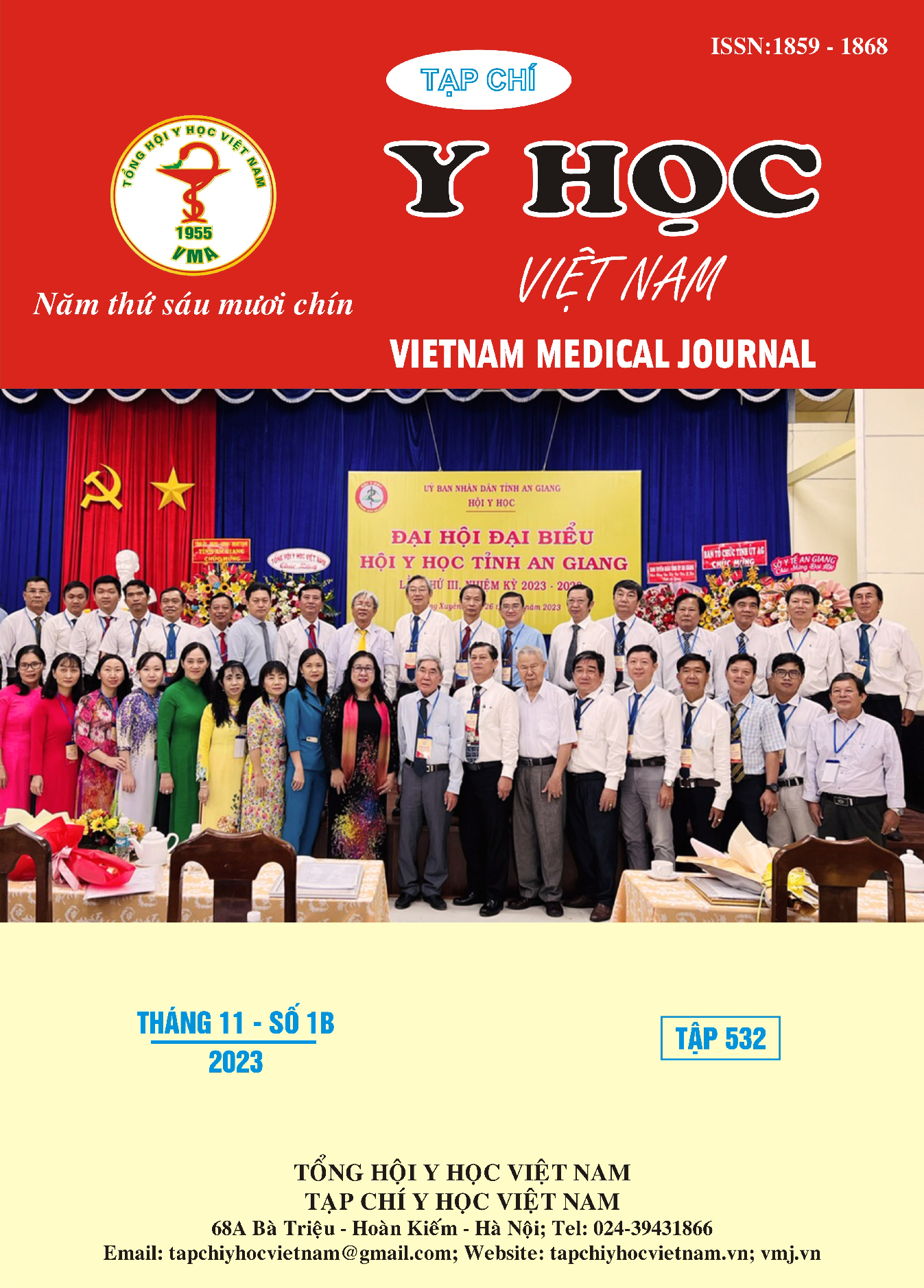CLINICAL FEATURES, ENDOSCOPIC IMAGES, AND THE MODEL OF GASTROESOPHAGEAL REFLUX DISEASE AT HOSPITAL 199
Main Article Content
Abstract
Objective: This study aims to describe the clinical features, endoscopic images, and the model of gastroesophageal reflux disease in patients undergoing diagnosis and treatment at Hospital 199. Material and methods: This is a cross-sectional descriptive study conducted on patients with symptoms of gastroesophageal reflux disease who visited Hospital 199 for diagnosis and treatment between December 2022 and November 2023. Results: A total of 119 patients were included in the study. The male-to-female ratio was 1.125, with an average age of 47.7 ± 15.6 years. The most common age group was 30-49 years. Related risk factors included alcohol consumption (46.2%), smoking (44.5%), and a habit of consuming spicy and fatty foods (49.6%). The most prevalent typical symptoms were acid regurgitation (68.9%) and heartburn (55.5%), while the most common extra-esophageal symptom was throat inflammation (34.1%). Approximately 41.2% of patients did not exhibit any esophageal damage. The majority of cases with esophageal damage were classified as mild (grade A, B), accounting for 47.9%. There was a correlation between Gerd-Q scores and the extent of esophageal damage observed during endoscopy. Conclusion: Gastroesophageal reflux disease occurs in both genders, with a higher prevalence in males. Common symptoms include acid regurgitation and heartburn. There is a significant association between GerdQ scores and the degree of esophageal damage observed during endoscopy.
Article Details
Keywords
Gastroesophageal reflux disease (GERD), Gerd-Q, hospital 199
References
2. Quách Trọng Đức, Hồ Xuân Linh (2022). “Giá trị của bộ câu hỏi GERD-Q trong chẩn đoán các trường hợp bệnh trào ngược dạ dày-thực quản có hội chứng thực quản”. Tạp chí Y học TP Hồ Chí Minh. Vol 16, số 1, 15-22.
3. Wang R, Zou D, Ma X, Zhao Y, Yan X, Yan H, Fang J, Yin P, Kang X, Li Q, Dent J, Sung JJ, Halling K, Johansson S, Liu W, He J (2010). “Impact of gastroesophageal reflux disease on daily life: the Systematic Investigation of Gastrointestinal Diseases in China (SILC) epidemiological study”. Health Qual Life Outcomes. 2010 Nov 10; 8:128
4. Nguyễn Văn Vinh. “Nghiên cứu hình ảnh nội soi đường tiêu hóa trên và đặc điểm lâm sàng bệnh trào ngược dạ dày thực quản tại Bệnh viện quân y 121”.
5. Triệu Thị Bích Hợp và cs (2022). “Đặc điểm lâm sàng, nội soi và các yếu tố nguy cơ bệnh trào ngược dạ dày thực quản ở bệnh nhân ngoại trú tại bệnh viện Thiện Hạnh, tỷnh Đắk Lắk năm 2022”. Tạp chí Y học Việt Nam, số 1, tháng 4 năm 2022.
6. Phạm Thị Hà Giang và cs (2022). “Đặc điểm lâm sàng, hình ảnh nội soi dạ dày thực quản trên bệnh nhân người cao tuổi có bệnh lý trào ngược dạ dày thực quản tại bệnh viện Thống Nhất”. Tạp chí Khoa Học trường Đại học Quốc Tế Hồng Bàng, số đặc biệt 12/2022.
7. Vũ Thu Trang, Phạm Văn Linh (2022). “Đối chiếu đặc điểm lâm sàng với tổn thương thực quản qua nội soi ở bệnh nhân trào ngược dạ dày thực quản tại bệnh viện Hữu Nghị Việt Tiệp năm 2021”. Tạp Chí Y học Việt Nam, 515(1).
8. Thạch Hoành Sơn, Quách Trọng Đức (2019). “Tần suất và các đặc điểm của triệu chứng ngoài thực quản ở bệnh nhân trào ngược dạ dày - thực quản”. Tạp Chí Y Học TP Hồ Chí Minh, Vol 23, No 1, 2019, 93-98.
9. Richter JE (2007). “The many manifestations of gastroesophageal reflux disease: presentation, evaluation, and treatment”. Gastroenterol Clin North Am. 2007 Sep;36(3):577-599
10. Trần Mạnh Bắc (2018). Áp dụng bảng điểm GERD-Q trong chẩn đoán trào ngược dạ dày-thực quản ở người cao tuổi. Luận văn Thạc sĩ Y học. Đại học Y Hà Nội.


